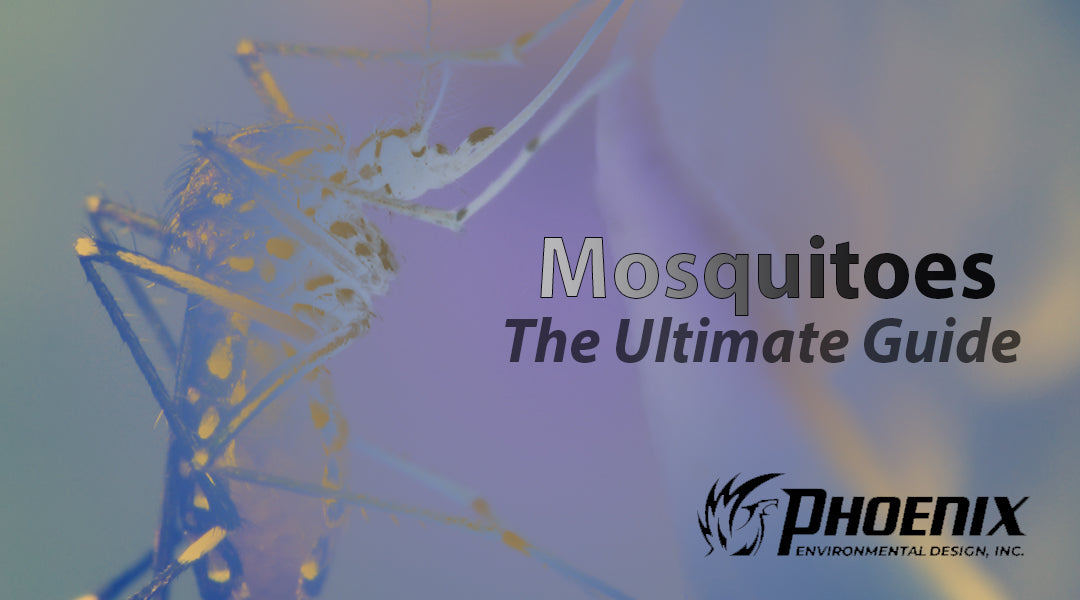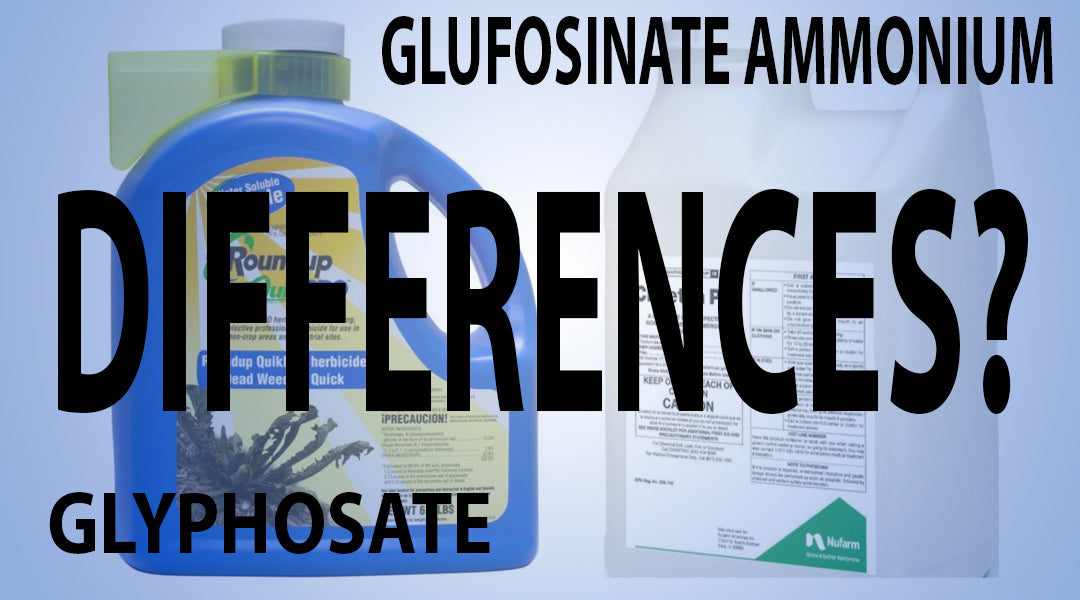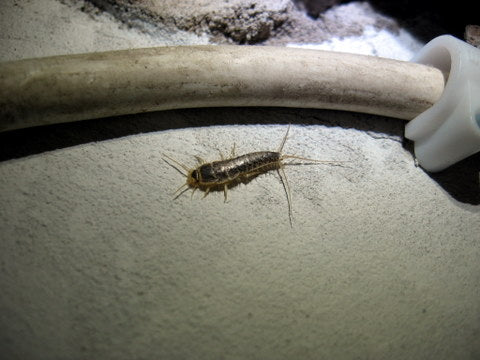Insects can really damage turfgrass and lawn ornamentals if an infestation goes untreated. Ants create unsightly mounds in the yard, grasshoppers attack grass blades and grubs devour grass roots, leaving behind dead patches in the lawn. The damage happens gradually over time, starting with small patches that give way to completely dead areas where only soil remains.
Other factors, such as improper lawn maintenance and weather, also play a role in a lawn's appearance. Adding too much fertilizer or herbicides to an area can burn the grass and create yellow or brown spots. Droughts take their toll on lawns, turning vibrant grass into dead patches. Raccoons, birds and moles can also damage turfgrass as they hunt for insects burrowing beneath the soil or clinging to the grass blades. If insects have caused the damage, it's important to identify the pests before applying chemical treatments that could cause further damage to the lawn.

Identifying Pest Insects
Creating an effective treatment method for eradicating pest insects starts with proper identification. Some insects that can damage residential and commercial lawns include:
- Caterpillars
- Grubs
- Root weevils
- Chinch bugs
- Grasshoppers
Different caterpillar species feed on various parts of the lawn. Whereas some feed on the roots, others feed on plant crowns and leaves. Grubs, which include scarab beetle larvae and masked chafers, also attack turfgrass at the roots and cause widespread damage throughout the lawn. Billbugs, otherwise known as weevils, produce grublike larvae that also feed on the turf.
Grasshoppers feed on grass blades and various plants, causing yellowing of leaves in some cases. However, they rarely occur in large numbers or require specific treatment. Other insects also live and thrive in lawns but are beneficial to the area, such as ladybugs, which feed on various lawn-feeding pests.
How to Manage Lawn Insects
Growing the appropriate grass for your climate and providing regular maintenance ensures a healthy lawn. Removing thatch from the turf reduces insect breeding grounds, and practicing good fertilization and irrigation techniques helps manage lawn insects throughout the year. You can also release naturally occurring predator insects on your lawn to help minimize pest infestations. Mowing the lawn at regular intervals and at the proper height also keeps out unwanted pests.
You should never apply pesticides to your lawn unless you have first identified a pest insect. If the pests have grown to damaging numbers, using pesticides can help reduce the population and save your lawn from any further damage. However, you should always choose a pesticide that targets the exact pest insect in your lawn without negatively impacting beneficial organisms and the environment.

A fruit tree root weevil. (Image by John Tann CC BY 2.0)
How to Prevent Pest Problems
Healthy lawns rarely need any pesticide applications, so keeping the lawn healthy is one way to prevent damage from pest insects. If the grass is under stress, applying a pesticide may produce phytotoxic damage and harm the turf even more.
Caring for Your Lawn
Improper irrigation, such as overwatering and frequent sprinkling, is a major cause of lawn damage. An overwatered lawn increases lawn susceptibility to stress and predisposes the grass to various diseases. Overwatering can happen due to poorly maintained sprinklers that provide too much water in some areas and not enough in others. Improperly spaced sprinkler heads can lead to uneven watering and cause brown spots in the yard. Correcting these problems can help in a number of ways, from decreasing your water bills to improving the health of your turf. You should always irrigate your lawn deeply and only once or twice per week.
Inappropriate fertilization also plays a factor in lawn health. Applying proper fertilization for the grass and at the right times encourages thick lawns that can tolerate some pest feeding. The timing and amount of fertilizer depends on your region, the grass species and the growing conditions in your area. Some warm-weather grasses may require two to four pounds of nitrogen over a 1,000-square-foot area while other native grass species require less. Leaving clippings on the lawn after mowing also affects the amount of nitrogen application that is required to improve lawn health.
Keeping the blades sharp on your mower and cutting the turf to an appropriate height helps to control pest infestations and reduce their food reserves. The mowing frequency and height depends on the grass species and the season. For cool-season grasses, mow the lawn between 1 1/2 and 3 inches in height. For warm-season lawns, keep the grass mowed to a height of 1 inch. Only cut about one-third of the grass height at a time to prevent damaging the grass blades and stunting lawn growth.
Aeration also improves lawn health by increasing water and fertilizer uptake. Over time, thatch can build up in the lawn and provide a place for insects to live and breed. Thatch reduces water, fertilizer and air penetration and causes unsightly spots in the yard. If it grows more than a half-inch thick, the thatch will encourage caterpillar and chinch bug infestations. Dense thatch also prevents pesticides from penetrating the roots and killing root-feeding insects. Use a dethatcher tool or a power rake to remove the thatch from the lawn and to target pest insects where they hide.

Weeds such as crabgrass attract more pest insects to your lawn.
Detecting Problems in Your Lawn
Look for weeds and problem areas before you mow. Abundant weed growth indicates an unhealthy lawn that is also susceptible to pest insects. Dense grass prevents weed growth by blocking the sun from the soil. Make sure to keep your grass mowed at the proper height to deter weeds from growing throughout your lawn. Other signs of problems include:
- Excess bugs gathering around porch and yard lights at night
- Numerous birds flocking in the yard
- Raccoons digging for grubs in the overnight hours
Insects gathering around the lights may come from far away, and birds may just be feeding on earthworms in your yard. Therefore, it's important to identify lawn damage before assuming you have a pest infestation.
After observing physical damage to your lawn, the next step is determining the cause. Because overwatering leads to most lawn damage, check your irrigation system for malfunctioning nozzles. Make sure to read the label on your fertilizer to ensure you're using the appropriate type for your lawn. Once you rule out all other causes, you should start looking for pests. One of the most accurate ways to detect chinch bugs, armyworms and other pest insects is to perform a drench test.
Performing a Drench Test
The drench test provides an ideal method for detecting chinch bugs, caterpillars, cutworms and other invasive pests. To perform the drench test, combine between two and four tablespoons of dishwashing liquid with one gallon of water; use two gallons of water for completely dry soil.
Apply the mixture evenly to the yard in square-foot sections. Test an area that includes both healthy and damaged grass. It should take about 10 minutes for the drench to soak into the soil and aggravate hidden pest insects. Afterward, count and identify the pests for future control.
Inspecting the Roots
Though the drench test helps to find some pests, it does not reveal billbug larvae, white grubs and June beetles. To detect these pest insects, dig or cut beneath the thatch. Examine the soil around the roots and crowns, and look for white larvae buried in the root system. White, legless larvae indicate a billbug infestation, and six-legged, C-shaped larvae indicate scarab beetles, known also as masked chafers. If you find more than six grubs or one billbug larva in a square-foot area, you may need to treat the pests.

White grubs plucked from the soil. (Image by David Cappaert CC BY-SA 3.0)
Treating Lawn Pests
Once you have identified the problem pests, choose a selective pesticide to eliminate the problem. Selective pesticides treat the insects without damaging the grass and any plants in the vicinity. These treatments often contain naturally occurring ingredients such as pyrethrum, a substance that is found in chrysanthemums. Pesticides with natural ingredients pose less risk to nontarget pests, humans and animals. Broad-spectrum pesticides, which contain various natural and chemical ingredients, control a variety of insects at once. These pesticides pose a risk to beneficial insects in the yard that prey on plant-feeding pests. Only use broad-spectrum pesticides for times when natural products cannot treat the infestation.
Before applying the pesticide, eliminate any thatch in the area. Mow the lawn to the appropriate height for the season, and irrigate the lawn unless otherwise directed on the product label. When treating white grubs, wait to irrigate until after applying the pesticide to make sure the treatment has moved down into the soil. Keep in mind that certain chemical pesticides can kill grass seedlings and injure lawns during high temperatures, so read the directions for use to prevent any further complications.
You can cause further lawn injury by repeating unnecessary applications, mixing incompatible products and using the wrong formulations for the grass. Using emulsifiers, solvents and other inert ingredients can also damage the lawn. As long as you identify the pests, choose an integrated pest management solution and follow the instructions for use, you can treat the problem without hassle and improve the overall health and visual appeal of your lawn.






Leave a comment (all fields required)